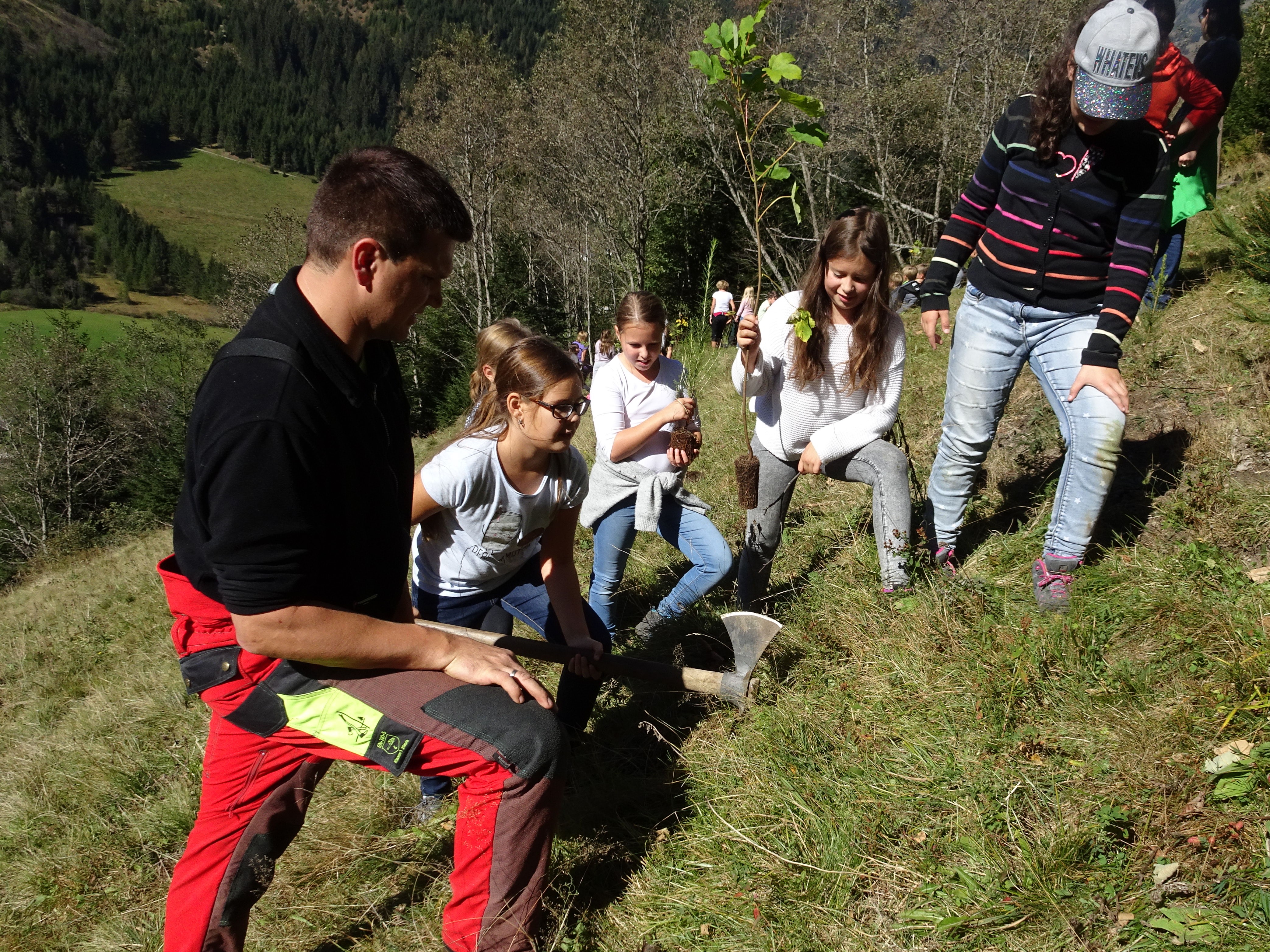A lot has happened since the massive flood disaster in Donnersbachwald in 2017. The debris flows in the town center and the basins of the debris barriers were cleared, dams were built and planted to protect the settlement area, new bridges were built and streets were renovated. All of this was done with great commitment and good cooperation from many institutions such as the WLV, the disaster control department of the Liezen BH, the fire department, the armed forces and the local population.
In order to take a closer look at the various natural hazards (floods, falling rocks, avalanches, bark beetles and forest fires) and protective measures, 30 Irdningen primary school students in the 4th grade and their teachers visited the flood protection measures in Donnersbachtal and the protective forest on Strohmoarberg on September 28th.
Directly at the torrent barrier in Finsterkarbach, in the town center of Donnerbachwald and below the protective forest and the avalanche protection on Stromoarberg, the interested children experienced silent witnesses up close in the area. In addition to viewing technical and biological protective measures, the young scientists were able to test the effect of the forest against rockfall on a small rockfall model slope, learned about terms such as “drunken forest” or “saber growth on trees” and learned how a forest works for erosion protection and avalanche protection should be constructed and which mix of tree species is suitable for optimal protective effect.
After a hearty forest snack, bark beetles and their larvae were closely observed under microscopes. The various feeding patterns in the bark were particularly impressive, as was the way the lavas eat their way out into the open. The children learned that up to 4 generations of bark beetles can grow up per year. This year in particular the problem is very big again. Only a trained eye can see the exit holes of the tiny beetles on the outside of the bark.
To protect the settlement area, the elementary school students reforested an area with various tree species such as spruce, larch and sycamore. The excursion was organized and carried out as part of the EU project CAMARO-D “Transnational cooperation for water protection and flood protection in the Danube region”.







